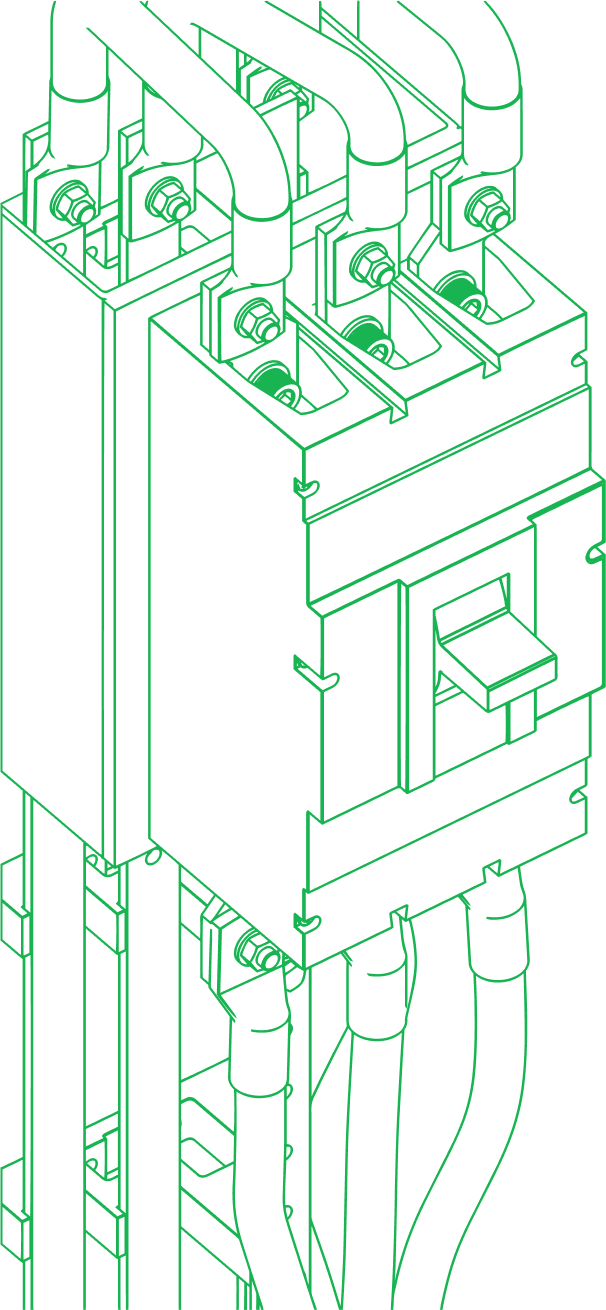Table of Contents
HubSpot has long been recognized as a leader in the world of marketing and CRMs. But today, HubSpot CRM for healthcare is helping providers, hospitals, and medical networks manage patient relationships with the same level of organization and efficiency that B2B companies have relied on for years.

TL;DR: Why use HubSpot for Healthcare?
-
Manages complex patient data with structured forms and centralized recordkeeping
-
Improves communication with automated emails, reminders, and two-way messaging
-
Integrates with EHRs to streamline operations and enable personalized outreach
-
Supports compliance needs with proper setup and ongoing consulting
-
Prepares providers for the future with AI tools, wearables, and scalable tech
Why HubSpot for Healthcare?
HubSpot gives healthcare teams an easy, connected way to manage patient relationships, without the clunky systems, slow results, or disjointed data that come with most CRMs.

It’s built to help you:
-
Know your patients: Use clear, unified data to understand their needs and preferences.
-
Provide better care: Deliver more personalized experiences that build trust and loyalty.
-
Connect providers: Simplify how teams share information and coordinate care.
Instead of relying on hard-to-use tools or outside specialists, HubSpot brings everything together in one place — so your team can spend less time managing software and more time focusing on patients.
Start simple with the HubSpot Free CRM to centralize patient records and track every interaction in one place.
(Affiliate link: if you sign up through it, we may earn a commission at no extra cost to you.)
How is HubSpot for Healthcare changing patient relationship management?
Patient relationship management has become increasingly important. With a greater focus on patient-centered care and the growing importance of patient satisfaction, healthcare organizations are realizing the need for more effective ways to manage their relationships with patients.
Why HubSpot for Healthcare Solves Patient Relationship Management Challenges
One of the key challenges is the sheer volume of patient data that needs to be managed. Healthcare organizations deal with an enormous amount of patient information, ranging from medical history to insurance details. This data needs to be captured, organized, and analyzed in order to provide personalized care and improve patient outcomes.
Another challenge is the need for seamless communication between healthcare providers and patients. Effective communication is crucial for building trust and ensuring that patients feel heard and understood. However, traditional methods of communication, such as phone calls and emails, can be time-consuming and inefficient. Healthcare organizations need a centralized platform that allows for quick and easy communication with patients, while also ensuring that patient data remains secure.
And healthcare organizations that adopt HubSpot aren’t just simplifying workflows, they’re seeing measurable growth.
After 12 months on HubSpot:
-
Inbound leads increase by 310%
-
Deals closed rise by 73%
-
Website traffic grows by 215%

These results highlight how unifying patient data and automating engagement through HubSpot drives sustainable growth across marketing, patient acquisition, and retention.
Top HubSpot Healthcare Features for Patient Engagement and Data Management

With its robust suite of tools, HubSpot CRM for healthcare gives organizations a single system to manage patient data, automate outreach, and track engagement, all while keeping compliance and care quality front and center.
HubSpot's platform allows healthcare organizations to capture and organize patient data in a structured and efficient manner. With features such as customizable forms and automated data entry, healthcare providers can easily collect and store patient information. This not only saves time and reduces the risk of errors, but also enables healthcare organizations to gain valuable insights from the data. By analyzing patient data, healthcare providers can identify trends, personalize treatment plans, and improve patient outcomes.
HubSpot’s analytics don’t just help with care plans, they also refine how healthcare organizations attract and convert new patients. In 2025, 43% of healthcare marketers reported an increase in qualified patient leads after adopting HubSpot’s precision targeting capabilities. That means more of the right patients finding the right providers, faster.
In addition to data management, HubSpot also offers powerful communication tools. Healthcare organizations can use HubSpot's platform to send automated appointment reminders, follow-up emails, and personalized messages to patients. This not only improves patient engagement, but reduces no-shows and helps healthcare providers stay connected with their patients throughout the care journey. On average, healthcare organizations that use HubSpot’s AI-powered optimization features for patient engagement campaigns see conversion rates improve by about 20%. Smarter automation doesn’t just save time, it makes every touchpoint more effective.
Automate appointment reminders, donor communications, or outreach campaigns with HubSpot Marketing Hub
(Affiliate link: if you purchase through it, we may earn a commission at no extra cost to you.)
HubSpot's platform also integrates with other healthcare systems, such as electronic health records. This seamless integration allows for a holistic view of patient information, enabling healthcare providers to make more informed decisions and provide personalized care. For example, if a healthcare organization wants to send vaccination reminders to young parents, with HubSpot they can easily segment their patient database and send personalized messages to this specific group, ensuring that children receive the necessary vaccinations on time. By having all patient data in one place, healthcare organizations can improve efficiency, reduce administrative burden, and improve the patient experience.
Case Study: How MedicAlert Streamlined Health Data with HubSpot
MedicAlert isn’t just known for its medical IDs, it manages one of Canada’s largest Personal Health Record databases, connecting first responders with critical health information for patients in need. When technical inefficiencies began slowing down account updates and financial transactions, MedicAlert turned to RevPartners for help.
After a deep platform audit, the RevPartners team identified and corrected major inefficiencies in MedicAlert’s AWS Lambda functions and API calls, optimizing performance within HubSpot CMS. The results were dramatic: daily API calls dropped from 12,000 to about 6,000, the error rate fell from 30% to under 1%, and user accessibility improved with secure, streamlined portals for subscribers and emergency contacts.
The outcome was a faster, more reliable system that helps MedicAlert continue doing what it does best, ensuring vital medical information is available anywhere, anytime.
How do you implement HubSpot for Healthcare successfully?
If you’ve ever wondered how to use HubSpot for healthcare, the key is to start with a clear implementation plan. Rolling out HubSpot for patient relationship management takes collaboration across clinicians, administrators, and IT, but when done right, it transforms how teams communicate and deliver care.

It’s also a move more healthcare organizations are making. In 2025, 82% of healthcare marketers said their companies invested in automation tools like HubSpot to optimize workflows and reduce administrative bottlenecks. The trend is clear: healthcare teams are leaning on smarter systems to do more with less.
In addition, thorough training and ongoing support are crucial to ensuring a smooth transition and maximizing the benefits of HubSpot's platform. This may include training sessions, webinars, and access to a dedicated support team that can address any questions or concerns.
When implementing HubSpot for healthcare, it’s important to consider the unique needs and challenges of the healthcare industry. Healthcare organizations deal with sensitive patient information and have specific compliance requirements, such as HIPAA regulations. Therefore, it’s necessary to ensure that HubSpot's platform is configured to meet these requirements and maintain the highest level of data security and privacy.

Another important aspect of implementing HubSpot for healthcare is integrating the platform with existing systems and workflows. This may involve integrating with electronic health record systems, appointment scheduling software, or other healthcare-specific tools. Seamless integration can streamline processes and improve efficiency, ultimately enhancing patient care.

Successfully implementing HubSpot for healthcare is not just about the technology; it also requires a cultural shift within the organization. Encouraging staff to embrace the platform and utilize its features effectively is crucial in achieving the desired outcomes. This may involve providing ongoing training and support, as well as fostering a culture of innovation and continuous improvement.
“We were looking for a new, modern solution that would allow our company to innovate and automate quickly without requiring third-party resources or specialists to build in our CRM system. We turned to HubSpot from a competitor CRM to help us achieve and exceed that goal.”
— DJ Hume, Vice President, Image Program, Scrubs & Beyond (source)
That’s the power of an intuitive, unified platform, one that eliminates the need for complex technical setups and gives healthcare teams the freedom to focus on care, not configuration.
What’s next for HubSpot for Healthcare with AI and wearables?
As technology continues to evolve, it’s important to stay ahead of the curve and anticipate future trends in patient relationship management. HubSpot's commitment to innovation and continuous improvement ensures that healthcare organizations can adapt to changing patient expectations and industry standards.
One of the future trends in patient relationship management is the increasing use of artificial intelligence (AI) and machine learning. These technologies have the potential to revolutionize the way healthcare providers interact with their patients. AI-powered chatbots, for example, can provide instant support and personalized recommendations to patients, improving their overall experience and satisfaction.

And that’s only the beginning. By 2030, an estimated 67% of healthcare marketing professionals believe that most patient relationship management tasks will be assisted by generative AI tools, the same kind now integrated within HubSpot’s platform. It’s a glimpse into a future where automation and human care work side by side to create truly personalized patient experiences.
Another future trend is the integration of wearable devices and remote monitoring technologies into patient relationship management systems. With the rise of wearable fitness trackers and smartwatches, healthcare providers can gather real-time data on patients' health and well-being. This data can then be integrated into HubSpot to provide personalized care plans and proactive health management.
The future of patient relationship management is about connection. HubSpot’s unified customer platform empowers healthcare teams to:
-
Work Easier: Use customizable CRM cards, automated workflows, and custom objects to boost productivity and improve patient retention.
-
Grow Faster: Leverage AI-powered tools like content remixing, social scheduling, and ads management to stand out in a competitive market and shorten time-to-value.
-
Simplify Operations: Deliver exceptional service with built-in Help Desk tools, AI assistants, advanced SLAs, and integrated risk management, ensuring lasting trust and compliance.
HubSpot connects your teams with everything they need to provide caring, data-driven experiences for patients and providers alike.
Why is HubSpot for Healthcare leading patient-centered care?
HubSpot is reshaping how we connect and care for patients. Although there are challenges, loads of data and privacy concerns, there are also AI-powered solutions. With HubSpot, the healthcare industry can continue to pivot to a more patient-centric future.









.png)
